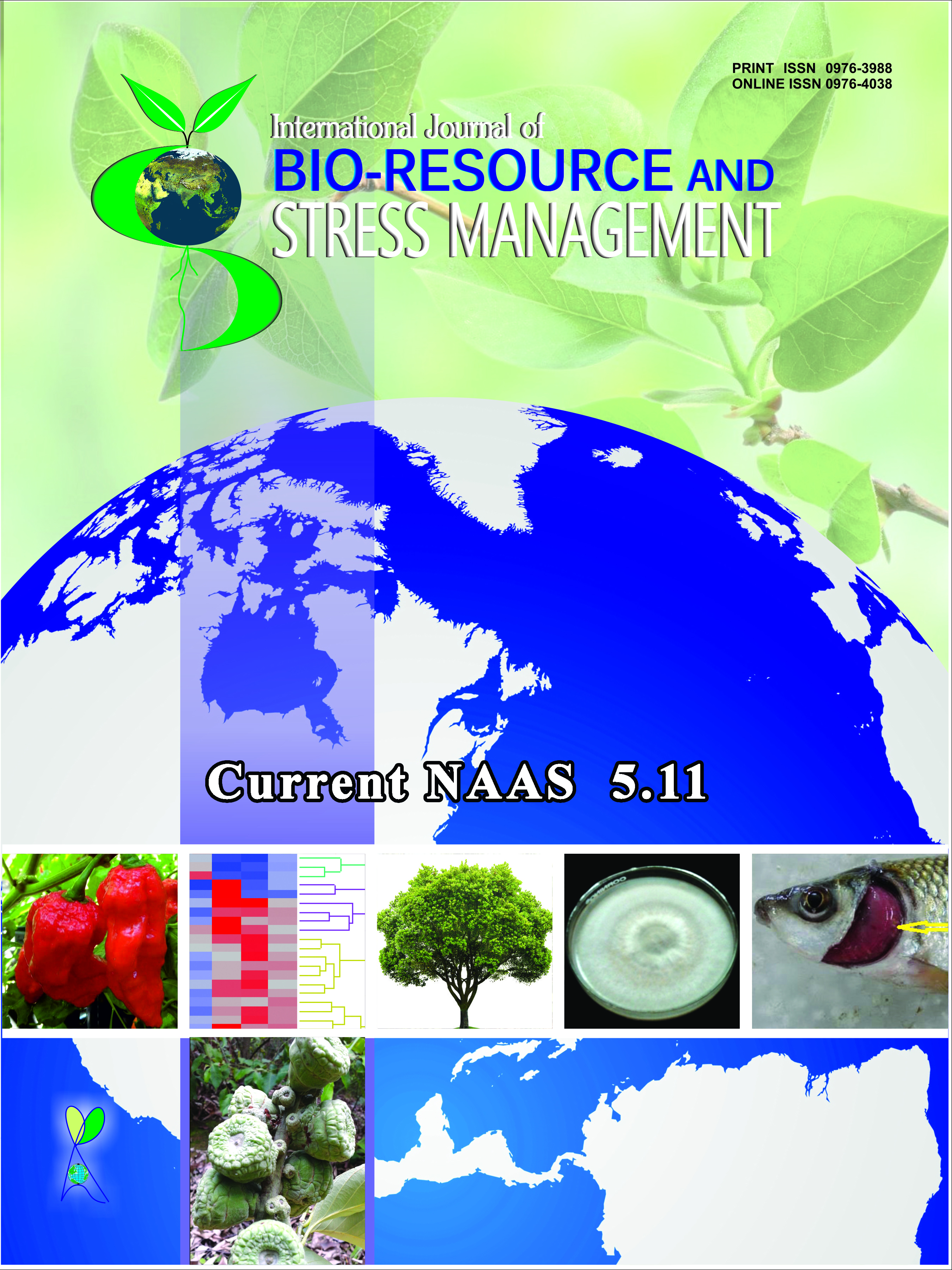Effect of Feeding of Different Rice Varieties on Biology of Angoumois Grain Moth (Sitotroga cerealella Olivier.) in Terai Region of West Bengal, India
Keywords:
Rice varieties, biology, post-monsoon, winter, autumn, S. cerealellaAbstract
Studies on feeding effect of different rice varieties on biology of Angoumois grain moth (Sitotroga cerealella Olivier.) in terai region of West Bengal conducted during 2007-2009 at the Laboratory, Department of Agricultural Entomology, Uttar Banga Krishi Viswavidyalaya, Pundibari, Cooch Behar, revealed that the favorable season for the development of S. cerealella is the post-monsoon months when it takes only 34.59 days to complete one generation and the optimum climatic conditions is 26.68- 29.230C and 66.16% RH. followed by 41.00-55.00 days with an average of 44.12 days at 23.95OC and 72.75% RH. during autumn months, in 89.16-103.25 days with an average of 98.86 days at 20.62OC and 71.45% RH. during winter months. The insect failed to develop completely in most of the varieties during winter. Among the twenty four different genotypes the insect took minimum time to complete its development when the rearing grain was PNR-519 during post-monsoon, Tulsimanjuri, Tulsibhog and Kanak during autumn and in UBSR-2 during winter.The duration was found to be longer in Swarna Mashuri during winter, IR-68 and Kanak during post-monsoon and during autumn in Nauda and IR-68. With respect to fecundity Mashuri, Swarna Mashuri and China Boro, were found to be suitable for the infestation of Sitotroga cereallela during post monsoon, Swarna Mashuri, Nauda and Ajaya during autumn and Swarna Mashuri and IET 4786 during winter months in terai region of West Bengal.
Downloads
Downloads
Published
How to Cite
Issue
Section
License
Authors retain copyright. Articles published are made available as open access articles, distributed under the terms of the Creative Commons Attribution-NonCommercial-ShareAlike 4.0 International License, which permits unrestricted non-commercial use, distribution, and reproduction in any medium, provided the original author and source are credited. 
This journal permits and encourages authors to share their submitted versions (preprints), accepted versions (postprints) and/or published versions (publisher versions) freely under the CC BY-NC-SA 4.0 license while providing bibliographic details that credit, if applicable.





